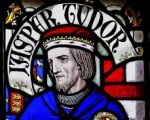
-
This week in history 18 – 24 December

-
Toni Mount talks about Tudor and Stuart dining

As a special Christmas bonus for all Tudor and Stuart fans, here’s a video of a talk that Toni Mount made a few days ago. It’s all about the food that the Tudors and Stuarts ate and the way they ate it – a fascinating talk.
[Read More...] -
Elizabeth Tudor Quiz
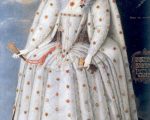
How much do you know about Elizabeth Tudor, also known as Elizabeth I, Good Queen Bess, Gloriana and the Virgin Queen?
Well, you can test your knowledge with this fun quiz. Grab your favourite beverage, get comfy and get that brain working! Good luck!
[Read More...] -
Tudor Society Advent Video 1 – 15

Here are daily short videos of Claire Ridgway in the build-up to Christmas. Each day Claire will be going live on Facebook and we’ll put those videos here too. Just a little Tudor Christmas fun each day.
[Read More...] -
14 December – A death, an accession and a burial
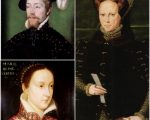
On this day in 1542, James V died at Falkland Palace in Falkland, Fife, Scotland, after being taken ill following the Scots’ defeat at the Battle of Solway Moss on 24th November. It is not known what killed him – some argue that it was a nervous collapse, and others that it was a virus.
While James was on his deathbed, his consort, Mary of Guise, gave birth to a daughter, and it was the six-day-old baby who became Mary, Queen of Scots on her father’s death. John Knox and the chronicler Robert Lindsay of Pitscottie both recorded that James uttered the words “it came wi a lass, it’ll gang wi a lass” (“it came with a lass, it will end with a lass”) as he lay dying, referring to how the Stuart dynasty began with a girl, through Marjorie Bruce, Robert the Bruce’s daughter, and how he feared it would now end with his daughter, Mary. However, the Stuart dynasty actually ended with another girl, Queen Anne, in 1714, and it is not known that James actually ever said these words.
[Read More...] -
Christmas Party – this Friday (15th)!

Just a reminder that you can join us in the chatroom at 11pm (UK time) this Friday, 15th December, for the Tudor Society Christmas party.
Bring your favourite tipple and be prepared to socialise. You can introduce yourself, ask a historical question to start a bit of a debate, swap book recommendations, tell jokes…. whatever! I do hope you can join us, even if it’s just for 5 minutes, otherwise, I’ll just be talking to Tim!
Here are the times in different time zones:
[Read More...] -
This week in history 11 – 17 December
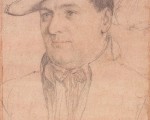
11th December:
1577 – Burial of Benjamin Gonson, Treasurer of the Navy and son of William Gonson, Vice-Admiral of Norfolk and Suffolk from 1536 until 1543. Gonson was buried at St Dunstan’s Church.
[Read More...]
1589 – Death of Patrick Lindsay, 6th Lord Lindsay of the Byres, at Struthers Castle in Fife, Scotland. Lindsay was a supporter of the Protestant Reformation, and one of the lords of the congregation. He was one of Mary, Queen of Scots’ guardians when she was imprisoned at Lochleven and was a Privy Councillor after she was deposed as queen.
1607 – Death of Roger Manners, member of Parliament and Constable of Nottingham Castle. He was buried at Uffington Church in Rutland.
1608 – Burial of Douglas Sheffield (née Howard), Lady Sheffield, at St Margaret’s Church, Westminster. Douglas was the eldest daughter of William Howard, 1st Baron Howard of Effingham, and the wife of John Sheffield, 2nd Baron Sheffield. Before her marriage, she served as a Maid of Honour to Elizabeth I. After her husband’s death, she had an affair with Robert Dudley, 1st Earl of Leicester, which resulted in the birth of a son, Sir Robert Dudley, the explorer and cartographer, born in 1574. Douglas claimed that she and Dudley had married in secret when she was pregnant in late 1573, but she could not provide any evidence to support this when her son sought to claim his father’s and uncle’s titles after Elizabeth I’s death. Douglas went on to marry Sir Edward Stafford in 1579. -
Tudor Christmas Wordsearch

It’s Sunday and time for our weekly puzzle!
Today, you can test your knowledge of how Christmas was celebrated in Tudor times with this fun wordsearch.
You can click on the link below or on the image to download it and print it out.
[Read More...] -
Henry VII’s Court Entertainment
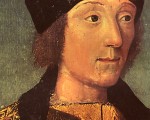
In today’s Claire Chats video I look at two examples of court revels that took place in Henry VIII’s reign.
[Read More...] -
Lady Katherine Gordon
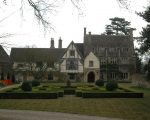
Born around 1474, Katherine Gordon was the daughter of George Gordon, second Earl of Huntly, and Elizabeth Hay. Her father acted as Chancellor of Scotland from 1498 to 1501. Little is known of Katherine’s early life, but she was reputed to be beautiful and charming. The future Henry VIII is said to have ‘marveled at her beauty and amiable countenance, and sent her to London to the Queen’. On 13 January 1496, when she was about twenty-one, Katherine married the Yorkist pretender Perkin Warbeck. Her husband had claimed to be Richard, Duke of York, son of Edward IV, since 1491. The prince had been incarcerated in the Tower of London by his uncle Richard III in 1483, and his fate was still unresolved eight years later. In 1495, Perkin arrived at the court of James IV of Scotland, having previously been supported by Charles VIII of France, Emperor Maximilian and Margaret, Dowager Duchess of Burgundy. Shortly after his marriage to Katherine, Perkin was granted Falkland Palace as a base for his adherents and as the headquarters at which his invasion of England was planned. Henry VII of England, in response to Warbeck’s activities, prepared an army with which to invade Scotland.
[Read More...] -
This week in history 4 – 10 December

4th December:
1506 – Birth of Thomas Darcy, 1st Baron Darcy of Chiche, courtier and administrator. He was the son of Roger Darcy, Esquire of the Body to Henry VII, and his wife, Elizabeth (née Wentworth). Darcy served as a Privy Councillor in Edward VI’s reign, and also Captain of the Yeoman of the Guard and Lord Chamberlain of the Household. He was arrested for supporting the Duke of Northumberland’s bid to place Lady Jane Grey on the throne, but was pardoned in November 1553.
[Read More...]
1514 – Death of Richard Hunne, merchant tailor and leading member of the Lollard community in London. He had been arrested for heresy, and imprisoned in “Lollards’ Tower” in St Paul’s Cathedral on 14th October after the discovery of a Wycliffite Bible at his home, and his body was discovered hanging in his cell from a silk girdle. It was claimed that he had committed suicide, but a coroner’s jury ruled that the hanging had been faked, and that he had been murdered.
1531 – Execution of Rhys ap Gruffudd for treason. He was beheaded after being accused of plotting against the King, although his biographer, R.A. Griffiths, points out that his trial was a “show trial” consisting of contrived testimonies and coached witnesses.
1555 – Papal sentence was passed on Thomas Cranmer in Rome, depriving him of his archbishopric “and of all ecclesiastical dignities”. Permission was also given for the secular authorities to decide on his fate.
1557 – Death of Robert King, Abbot of Thame and Bishop of Oxford. He was buried in Oxford Cathedral. King was one of the judges who sat in judgement at the trial of Thomas Cranmer in 1555.
1585 – Death of John Willock, physician and Scottish reformer, at Loughborough in Leicestershire. He was buried at his church, All Saints, in Loughborough. Willock became the Chaplain of Henry Grey, Marquis of Dorset, and father of Lady Jane Grey, in the 1540s.
1595 – Death of William Whitaker, theologian and Master of St. John’s College, Cambridge, at the master’s lodge after going to bed with a hot “ague”. He was buried at St John’s. His works included Liber precum publicarum (1569), Ad rationes decem Edmundi Campiani jesuitæ responsio (1581), responses to Nicholas Sander and Edmund Campion, Disputatio ad sacra scriptura and Adversus Thomae Stapletoni (1594).
1609 – Death of Alexander Hume, Scottish poet and writer. He is known for his 1599 “Hymnes, or Sacred Songs”, which includes his great poem “Of the Day Estivall” which describes a summer’s day, from dawn until dusk. -
Lettice Knollys and Robert Dudley Quiz

Grab your favourite beverage and snack, get your thinking cap on, make yourself comfortable and test your knowledge of this famous Tudor couple with our Sunday quiz. Good luck!
[Read More...] -
Transcript of live chat with Julian Humphrys – Flodden

Thanks to all who came to last night’s live chat with Julian Humphrys from the Battlefields Trust. We had a great time and learned a lot of things about Flodden and other battles.
For those who didn’t manage to make it into the chatroom, here is a transcript of our discussion.
[Read More...] -
Keeping warm in Tudor times

Brrrrr! I know I live in “sunny Spain”, but it’s got rather chilly here! What’s the weather like with you? I’m definitely more of a summer girl!
This cold snap inspired this week’s Claire Chats and I hope you enjoy it.
[Read More...] -
Expert Talk – Thornbury Castle by Sandra Vasoli and James Peacock

This month’s expert talk is presented by two wonderful historians, Sandra Vasoli (author of the Je Anne Boleyn series and also Anne Boleyn’s Letter from the Tower) and James Peacock (Historic Royal Palaces). The topic of the talk is Thornbury Castle, a place which has a LOT to do with the Tudors! You’ll love this talk, and you should look out for Sandra’s spooky tale at the end!
[Read More...] -
Elizabeth I’s Golden Speech – 30 November 1601

On 30th November 1601, Queen Elizabeth I delivered her famous Golden Speech to the House of Commons. She gave this speech to address their concerns over England’s economic state of affairs. It was the last speech that she gave to Parliament, and in it, she spoke of her position as queen and her love and respect for her realm and for her members of Parliament.
There are various versions of this speech, but the following version is taken from diarist and MP Hayward Townshend’s Commons Journal, printed in Historical Collections: Or, An Exact Account of the Proceedings of the Four Last Parliaments of Q. Elizabeth:
“In the Afternoon, the Commons Attended the Queen at White-Hall, about Three of the Clock, to the Number of One Hundred, and Forty.
The Commons attend the Queen in the Council-Chamber.
At length, the Queen came into the Council-Chamber; where sitting under the Cloth of State, at the Upper End, the Speaker, with all the Commons came in: And after Three low Reverences made, he spake to this Effect:
The Speaker’s Speech to Her Majesty.
[Read More...] -
Jane Boleyn, Viscountess Rochford

Thank you to historian and author Conor Byrne for writing this article for us.
Jane Parker was the daughter of Henry Parker, Baron Morley, and Alice St John. Her birth date is unknown, but her marriage took place in late 1524 or early 1525 when she would have been at least twelve years of age, the earliest age permitted for females to marry. Since she accompanied Katherine of Aragon as an attendant to the Field of Cloth of Gold in 1520, and appeared at a court masque two years later, it is probable that she was born no later than 1507 and probably by about 1505. Her highly educated father was a gentleman usher to Henry VIII. From her teenage years, Jane resided at court and lived in some luxury; her belongings included sleeves and apparel of rich fabrics, jewellery and plate.
[Read More...] -
Margaret Tudor 1489-1541

Margaret Tudor, Queen of Scotland, was born on 28th November 1489 at Westminster Palace. Her parents were King Henry VII and Elizabeth of York, and she was the couple’s second child and eldest daughter. The couple named her Margaret after her paternal grandmother, Lady Margaret Beaufort, and she was baptised at St Margaret’s Church, Westminster, on 30th November.
Margaret spent her childhood at Sheen and at Eltham Palace but was sent to Scotland at the age of thirteen to marry King James IV following the 1502 Treaty of Perpetual Peace between England and Scotland. Margaret and James were married by proxy on 25th January 1503 at Richmond Palace and Margaret set off from Richmond Palace to travel to Scotland on 27th June 1503, spending eleven days with her grandmother, Lady Margaret Beaufort, at Collyweston in Northamptonshire on the way. Stops included Grantham, York, Durham, Newcastle and Berwick, which was, at the time, held by England. Margaret arrived in Scotland on 1st August and the wedding took place took place in the chapel of Holyroodhouse, Edinburgh, on 8th August 1503. The marriage ceremony was performed by the Archbishop of Glasgow and the papal bulls were read by the Archbishop of York.
[Read More...] -
This week in history 27 November – 3 December
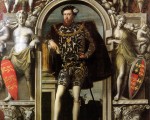
27th November:
1531 (some say 4th December) – Burning of Richard Bayfield, Benedictine monk and reformist, at Smithfield for heresy. Sir Thomas More caught Bayfield importing Lutheran books into England, and he was tried by John Stokesley, Bishop of London, at St Paul’s on 10th November 1531, and convicted.
[Read More...]
1544 – Death of Sir Edward Baynton, soldier, courtier and Vice-Chamberlain to five of Henry VIII’s wives, in France. His cause of death is unknown, but he may have been wounded while serving as a soldier in France. Baynton had arranged to be buried at Bromham, but it appears that he was buried in France.
1556 – Death of Henry Parker, 10th Baron Morley, nobleman, diplomat, translator and father of Jane Boleyn (wife of George Boleyn), at his home, Hallingbury Place, Great Hallingbury, Essex. He was in his late seventies at the time of his death. He was buried at St Giles’s Church, Great Hallingbury. Click here to read more about this interesting Tudor man. -
Tudor Composers and Compositions Wordsearch
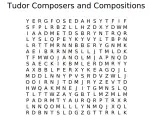
Today’s Sunday fun is a wordsearch on composers, compositions and musicians of the Tudor period. Print it out, grab a drink and a snack, get comfy and get that brain working. Be warned – the words can go in any direction!
Click on the link or image to download and print off the wordsearch:
[Read More...] -
December 2017 Tudor Life – Christmas
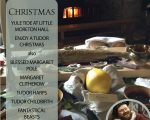
Here is the full version of our 78-page December edition of Tudor Life Magazine. This month, as you can imagine, we focus on Tudor Christmas, but we also look at martyrs during the period too. As usual, our expert contributors have really enjoyed writing for this magazine and it’s packed with facts, information and even a Henry VIII dot-to-dot this time!
[Read More...] -
John Knox

On 24th November 1572, the Scottish clergyman, famous Reformer and founder of Presbyterianism, John Knox, died at his home in Edinburgh as his wife read aloud from Paul’s First Letter to the Corinthians. He was buried in the cemetery of St Giles’ Cathedral, Edinburgh, where he had served as minister. Knox is known for bringing the Protestant Reformation to the church in Scotland.
Here are some details about his life and works from Claire’s book On This Day in Tudor History:
John Knox was born in c.1514 at Giffordgate in Haddington and was the son of William Knox, whose family had served the Earls of Bothwell for many years. John studied at St Andrews University under John Mair before entering the Church.
[Read More...] -
How did the Tudors go to the toilet?

Thank you so much to Oscar for inspiring this week’s Claire Chats with his question “What did the Tudors use to wipe their bottoms?”. In the following video, I answer that question and also talk about Tudor toilets.
[Read More...] -
22 November 1594 – The death of Sir Martin Frobisher

On this day in history, 22nd November 1594, Sir Martin Frobisher, naval commander, privateer and explorer, died at Plymouth from gangrene. Frobisher had been shot in the thigh during hand-to-hand combat at the Siege of Fort Crozon. His entrails were buried at St Andrews, Plymouth, and his body was taken to London and buried at St Giles Cripplegate.
[Read More...] -
This week in history 20 – 26 November

20 November:
1515 – Birth of Mary of Guise (Marie de Guise), Queen of Scots, consort of James V, regent of Scotland and mother of Mary, Queen of Scots, at the castle of Bar-le-Duc in Lorraine. She was the eldest daughter of Claude of Lorraine, Duke of Guise, and Antoinette de Bourbon, daughter of Francis, Count of Vendome, and Marie de Luxembourg. Mary was Queen Consort of Scotland from 1538-1542, and regent from 1554 until her death in 1560.
[Read More...]
1518 – Death of Sir Marmaduke Constable, soldier and administrator. He served in France with Edward IV and Henry VII, and although he fought on the side of Richard III at the Battle of Bosworth, he managed to gain Henry’s trust. He commanded the left wing of the forces under Thomas Howard, Earl of Surrey, at the 1513 Battle of Flodden, and this service led to him receiving a letter of thanks from King Henry VIII.
1556 – Death of Sir John Godsalve, member of Parliament, landowner and administrator, at Norwich. He was buried in St Stephen’s Church, Norwich, in the Lady Chapel. Godsalve’s offices included Constable of Norwich Castle, Keeper of the Gaol there, commissioner for chantries in Norfolk and Suffolk, Justice of the Peace for Norfolk and Comptroller of the Tower of London Mint.
1558 – Death of Maurice Griffin, Bishop of Rochester, probably at the Bishop’s Palace in Southwark. He was buried at the church of St Magnus the Martyr, London Bridge. Griffin was Welsh and he left provision in his will for the setting up of Friars School in Bangor, with the support of William Glyn, Bishop of Bangor, and Jeffrey Glyn.
1591 – Sir Christopher Hatton, Elizabeth I’s Lord Chancellor and favourite, died aged fifty-one. He died at Ely Palace in London. He had been ill for some time and Elizabeth I had visited him on the 11th November. He was given a state funeral on 16th December at the old St Paul’s Cathedral, and a monument was erected at the high altar. The old St Paul’s Cathedral was destroyed in the Great Fire of London in 1666.
1600 – Burial of Robert Wilson, actor and playwright, at St Giles Cripplegate in London. Wilson acted in the companies Leicester’s Men and the Queen’s Men, and is known for his plays which include “The Three Ladies of London” (1581), “The Three Lords and Three Ladies of London” (1590), “The Cobbler’s Prophecy” (1594) and “The Pedlar’s Prophecy” (1595). He was also one of Philip Henslowe’s writers, writing plays for the Rose Theatre.
1612 – Death of Sir John Harington, courtier, author and inventor of the flush toilet. He was buried at the family estate of Kelston, near Bath. -
The Christening of Arthur Tudor by Kristie Dean
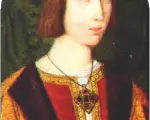
Thank you so much to historian and author Kristie Dean for writing this article for us.
When I was writing my last book, I spent time researching Elizabeth of York and her role as a bridge between the York and Tudor dynasties. While Henry may have married Elizabeth in order to help secure his throne, it seems clear that he grew to love her, or at the very least, considered her a partner. This may have partly stemmed from a shared sense of responsibility for their children. When Arthur was born, Henry seized the moment to display the strength of his dynasty.
[Read More...] -
Mary Howard Quiz
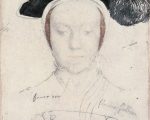
This week’s Sunday fun is a quiz on a Tudor lady: Mary Howard, cousin of Queens Anne Boleyn and Katherine Howard. Enjoy getting those little grey cells working with these ten questions – good luck!
[Read More...] -
Elizabeth I’s accession – 17 November 1558

Today is Accession Day, a day that was celebrated throughout the reign of Elizabeth I and the reigns of many of her successors. It commemorated the day that Elizabeth I came to the throne on the death of her half-sister, Queen Mary I, on 17th November 1558. You can click here to read about how Accession Day was celebrated, but in today’s Claire Chats video I’m talking about the 17th November 1558 and the story of Elizabeth receiving the news that she was queen.
[Read More...] -
Bess of Hardwick
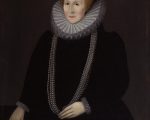
Elizabeth Hardwick, more popularly known as Bess of Hardwick, was the daughter of John Hardwick and Elizabeth Leeke and was born in 1527. The Hardwicks were a prosperous Derbyshire gentry family. Her father died in 1528 and her mother remarried, marrying Ralph Leche of Chatsworth. Bess is today remembered as a builder of great houses, including Chatsworth, Hardwick Hall and Oldcotes. Her name continues to be associated with the rhyme “Hardwick Hall, more glass than wall”. She was, in the words of her biographer Mary S. Lovell, “the most powerful woman in the land next to Queen Elizabeth I’”. Bess was, according to Lovell, “a serious achiever” and it was through her four husbands that she gradually acquired notable wealth and status.
[Read More...] -
Lil’s vintage world visits Baddesley Clinton

Enjoy this fantastic video from Lil’s Vintage World as she visits the Tudor property, Baddesley Clinton.
[Read More...]
